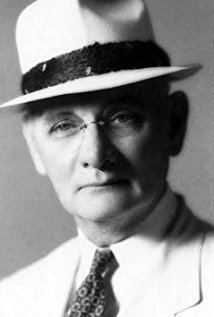Birth name Charles Edward King Genre Jazz | Associated acts Royal Hawaiian Band | |
 | ||
Born January 29, 1874
Estate of Queen Emma of Hawaii, Honolulu, Hawaii, United States ( 1874-01-29 ) Occupation(s) Songwriter, composer, legislator, educator Died 27 February 1950, Queens, New York City, New York, United States Similar Dick Manning, Al Hoffman, Alfredo Gutiérrez, Luis Towers, Empire ISIS | ||
Charles Edward King (January 29, 1874 – February 27, 1950) was an educator, Hawaii territorial legislator, and a songwriter who is most widely known as the composer of "Ke Kali Nei Au". King was inducted into the Hawaiian Music Hall of Fame in 1995.
Contents
Teaching and legislative career
Charles E. King was born of Hawaiian ancestry, at the Nuʻuanu Valley estate of Queen Emma of Hawaii, in Honolulu, to Walter and Mary Ann Brash. He was adopted by his maternal grandfather John Lewis King after the death of his mother, and was christened by his godmother Queen Emma at St. Andrew's Cathedral. King was educated in public schools in Hawaii and the Kamehameha School for Boys. Following his 1891 graduation from Kamehameha School, Charles Reed Bishop, husband of Bernice Pauahi Bishop, paid his tuition at Oswego Primary Teachers Training School in New York. He returned to Hawaii, teaching music in the Kailua-Kona school district, and also at Kamehameha School for Boys. In 1914, Kamehameha alumni circulated a petition requesting that King be named school principal, but Ernest C. Webster was chosen instead.
When Bishop Estate trustee Samuel Mills Damon resigned in 1916, the trustees named former teacher William Williamson, a white man, to fill the vacancy. As established by the original trust deed, any trustee appointment had to be approved by the Supreme Court of the Hawaiian Islands. With his post-teaching success in business, Williamson's nomination easily received that approval. The nomination ran into trouble with Judge C. W. Ashford of the probate court that was charged with overseeing trusts. Ashford decreed that the slot should be filled by someone of Hawaiian ancestry, and therefore representative of the very people for whom the trust was established. He appointed alumnus King, who had spoken openly about his concerns that the school was under-performing academically and not adequately preparing its graduates for career or economic success. Ashford's appointment of King was overturned on appeal in the ninth circuit court, which ruled in favor of the original Williamson appointment having been in strict accordance with the trust deed.
After considering a run for various elected offices in 1917, King successfully ran on the Republican ticket in 1918 for a seat in the Territory of Hawaii senate. The College of Agriculture and Mechanic Arts of the Territory of Hawaii was authorized by the legislature in 1907 and first began operating in 1908 on Young Street in Honolulu. The institution's name was changed in 1911 to College of Hawaii and relocated to the Manoa valley. A community need to expand the school's curriculum and offer university-level degrees, led to King's introducing Senate Bill 76 in 1919, creating the legislation to establish the University of Hawaii at Manoa. While still serving in the legislature, he also led campus song concerts at the university.
Music career
He grew up surrounded by traditional Hawaiian mele style of music and was a musical protégé of Liliuokalani. King began pursing songwriting sometime in mid-life, publishing his first two books of sheet music when he was 42 years old.
"Kamehameha Waltz" was penned by King as a paean to his alma mater and to Bernice Pauahi Bishop who created the trust fund that established the school, "Majestic stands Kamehameha/My home of education"..."For you, O great Pauahi, high chiefess/Our exclamations of joy". The song was performed in 1914 by the King Glee Club as part of The Woods of Hawaii musical presentation at the Honolulu Opera House, sponsored by the Christian youth organization Young People's League. It was first recorded on May 18, 1928 by the Charles E. King Male Chorus on the Columbia Records label. Since then, it has become a standard at the school's annual song contest.
His compositions were favored by Hawaiian lap steel guitarist Sol Hoʻopiʻi who, along with Glenwood Leslie and Lani McIntyre as Sol Hoopii's Novelty Trio, recorded 17 of King's songs from 1927–1931.
The most famous song associated with King, "Ke Kali Nei Au" (Waiting For Thee), is known to today's audiences as the Hawaiian Wedding Song. Recorded by numerous modern-day artists, King's original lyrics are not the same as the 1958 translation by Al Hoffman and Dick Manning. King's version was not a wedding song but one of several tunes written for his 1925 Hawaiian-language opera The Prince of Hawaii, which toured the mainland United States with King in 1926. "Ke Kali Nei Au" was first recorded in Honolulu on May 22, 1928 on the Columbia Records label as a duet with Helen Desha Beamer and Sam Kapu Sr. accompanied by the Don Barrientos Hawaiian Orchestra.
At the 1917 state funeral of his musical mentor Liliuokalani, King led the Young People's League in singing her composition "Aloha ʻOe" on the balcony of ʻIolani Palace as her catafalque was carried out to take her casket for entombment in the Kalākaua Crypt of the Royal Mausoleum of Mauna ʻAla.
He served as conductor of the Royal Hawaiian Band for two non-sequential periods, 1932–1934 and 1939–1941.
Personal life
In 1911, King's wife Jean Bates died of cancer and was buried at Kawaiahaʻo Church cemetery.
Through his musical work with the Young People's League, he became acquainted with Emma Liftee of Kona. The couple was married by Rev. Akaiko Akana on July 26, 1915.
When the United States entered World War II, King relocated to Elmhurst, New York, with his last wife Regina P. Hughes and began pursuing his music publishing interests. He died on February 27, 1950.
Publications
Compositions
Partial listing. Sources: DAHR, UC Santa Barbara and huapala.org
Songs
Lei Lokelani
Broadway Melody of 1936: Love Boat
Pua Carnation
